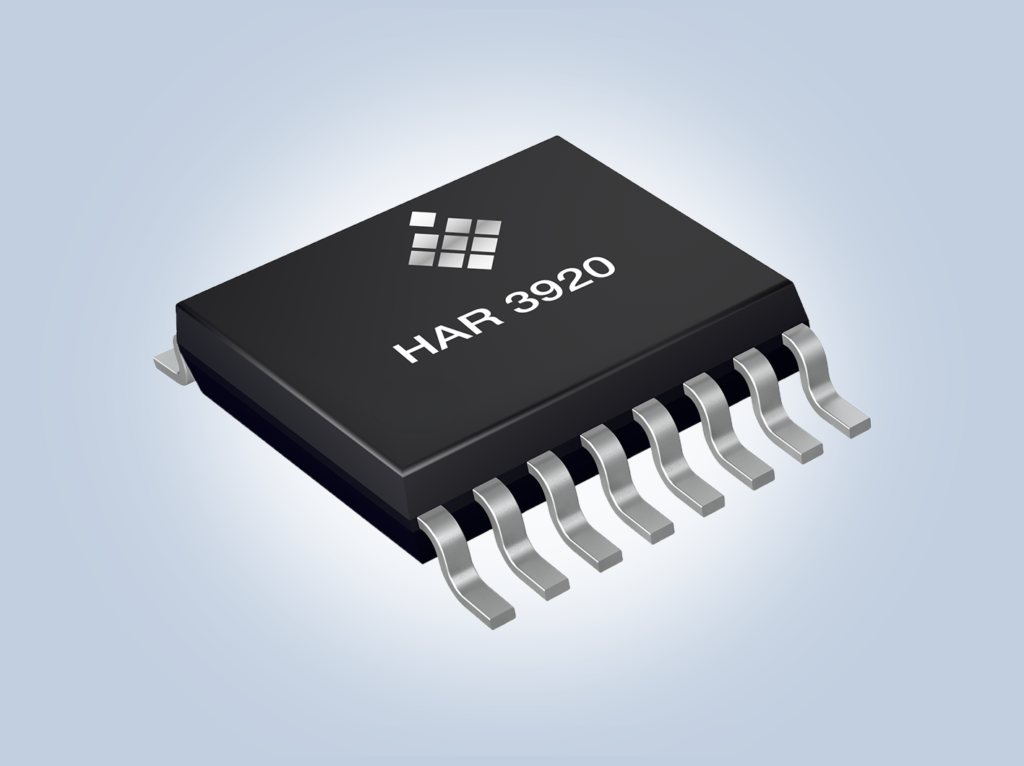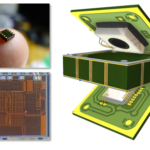ASIA ELECTRONICS INDUSTRYYOUR WINDOW TO SMART MANUFACTURING
TDK Presents New Dual-Die Stray-Field 3D Position Sensor
TDK Corporation further extends its Micronas 3D HAL® position sensor family with the new dual-die sensor HAR 3920-2100* for automotive and industrial applications. Its design meets the demand for highly accurate both linear and angular position measurements in the presence of disturbing magnetic stray fields. It was developed in accordance with ISO 26262. Thus, HAR 3920 fulfills ASIL C requirements, making it suitable for integration into automotive safety-related systems up to ASIL D. Moreover, they are suitable for applications such as accelerator pedal position or throttle valve position measurement or as non-contact potentiometer.**
TDK plans to start production in April 2024, while samples are already available on request.

Dual-Redundancy Design
Mainly, TDK HAR 3920 stands out with its dual-redundancy design. Specifically, they are two independent dies stacked in a single package, electrically connected to one side’s pins. This stacked-die architecture ensures consistent output signal characteristics by occupying the same magnetic-field position. Utilizing Hall technology, the sensor measures vertical and horizontal magnetic-field components, suppressing external magnetic stray-fields using an array of Hall plates. The sensor can measure a 360° angular range and linear movements of a magnet. A simple two-pole magnet is sufficient for precise rotation angle measurements, ideally placed above the sensitive area in an end-of- shaft configuration. Also, the sensor supports stray-field robust off-axis measurements.
Additionally, HAR 3920 carries versatile features. Specifically, it has linear, ratiometric analog output signal with passive wire-break detection, compatible with pull-up or pull-down resistors. Also, it offers a switch output (open drain) derived from calculated position information or other sources along the devices signal path, allowing users to define on/off switching points, switch logic, and switch polarity.
On-chip signal processing calculates one angle per die from the magnetic-field components, converting this value into an analog output signal. Users can adjust major characteristics like gain, offset, and reference position by programming the non-volatile memory.
Designed for automotive and industrial applications, it operates in an ambient temperature range from –40 °C up to 160 °C, dependent on the supply voltage range. Compact and versatile, the sensor is available in the sixteen- pin SSOP16 SMD package. Specifically, it supports accelerator pedal position sensor, throttle valve position sensor and non-contact potentiometer.
Glossary
Stray-field compensation – modern Hall-effect sensors must be insensitive against disturbing fields generated by e-motors or power lines in hybrid or electric vehicles (xHEV).
Main Features and Benefits
- Stray-field robust 360° rotary and linear position detection up to 35mm
- High robustness against mechanical misalignment between sensor and magnet in rotary setups
- Optimized design supporting rotary setups together with ferrite magnets
- SEooC ASIL C ready according to ISO 26262 to support Functional Safety applications (The device can be integrated in automotive safety-related systems up to ASIL D)
- 12-bit ratiometric analog output
- Additional switch output (open drain)
- Suitable for automotive applications, due to a wide ambient temperature range from -40 °C to 160°C
* HAL/HAR 39xy uses licenses of Fraunhofer Institute for Integrated Circuits (IlS).
** Any mention of target applications for our products was made without a claim for fit for purpose as this has to be checked at the system level.
-15 March 2024-




